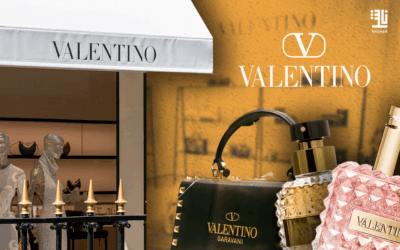Aura Print worked with Google Books which has approximately 25 million books to identify the cumulative mentions of 31 prominent European cities across books spanning from 1920 to 2019.
Here are the results:
Rank European City Most popular decade Total occurrences in books (1920-2019)
1 London 1960s 286,675,501
2 Paris 1920s 95,290,475
3 Rome 1920s 48,840,949
4 Berlin 1940s 37,079,709
5 Moscow 1980s 31,405,361
6 Florence 1920s 19,414,470
7 Vienna 1980s 18,995,437
8 Athens 1960s 15,118,606
9 Dublin 1920s 15,021,998
10 Amsterdam 1990s 12,868,807
11 Brussels 1990s 10,949,717
12 Venice 1920s 10,237,695
13 Madrid 1990s 9,883,636
14 Stockholm 1980s 8,813,100
15 Warsaw 1980s 8,054,316
16 Munich 1990s 8,025,343
17 Milan 1960s 7,917,978
18 Copenhagen 1950s 7,317,785
19 Prague 1960s 6,702,244
20 Porto 1920s 6,604,087
Dubbed by Charles Dickens as the magic lantern that fired his creativity, the British capital has played host to a multitude of novels over the last century.
It is followed by Paris with 95,290,475 literary mentions. The romantic and intriguing City of Lights has charmed and inspired a plethora of romance and fiction authors. Rome claims the third spot. It is mentioned 48,840,949 times.
Rome triumphs over other Italian cities with an impressive 74% greater share of literary attention than Florence (6th), Venice (12th) and Milan (17th), on average.
With 37,079,709 mentions Berlin takes fourth place. Steeped in history with a turbulent past, the partially destroyed German capital offers a striking cityscape, serving as a wellspring of inspiration for historical fiction and thriller writers.
Experts from Aura Print compiled a list of the most prominent European cities, establishing a seed list comprising of 31 cities.
They then utilised Google Ngram Viewer to find the percentage of mentions for each city during every decade for the past 100 years (1920 – 2019).
To ensure relevancy, each search term was appended with the _NOUN suffix, indicative of instances where the term was used within a noun-related context.
The experts obtained the total word count spanning the last century from Ngram and calculated the number of mentions accrued by each city. To do this, the total word count was multiplied by the corresponding percentage of mentions.
Finally, the total occurrences from 1920 to 2019 were ranked to reveal the most popular European cities named in literature.
Some book recommendations
Dublin: Ulysses by James Joyce and The Red Man by Catherine Gore
London: A Tale of Two Cities by Charles Dickens, Sherlock Holmes by Arthur Conan Doyle, The House by the Thames by Gillian Tindall, White Teeth by Zadie Smith, A Concise Chinese-English Dictionary for Lovers by Xiaolu Guo, Home Fire by Kamila Shamsie, Girl, Woman, Other by Bernardine Evaristo, We Are All Birds of Uganda by Hafsa Zayyan, The Island of Missing Trees by Elif Shafak, Asylum Road by Olivia Sudjic,
Paris: Paris Is Always A Good Idea by Jenn McKinlay, The Little Paris Bookshop by Nina George, The Paris Wife by Paula McLain, Panorama of Paris by Louis-Sébastien Mercier, Paris Vagabond by Jean-Paul Clébert, A Place of Greater Safety by Hilary Mantel, Astragal by Albertine Sarrazin, Summer Will Show by Sylvia Townsend Warner, Insel by Mina Loy, Last Words from Montmartre by Qiu Miaojin
Rome: Eat, Pray, Love by Elizabeth Gilbert, Conclave by Robert Harris, Four Seasons in Rome by Anthony Doerr
Berlin: Goodbye to Berlin by Christopher Isherwood, Alone in Berlin by Hans Fallada , The Artificial Silk Girl by Irmgard Keun







